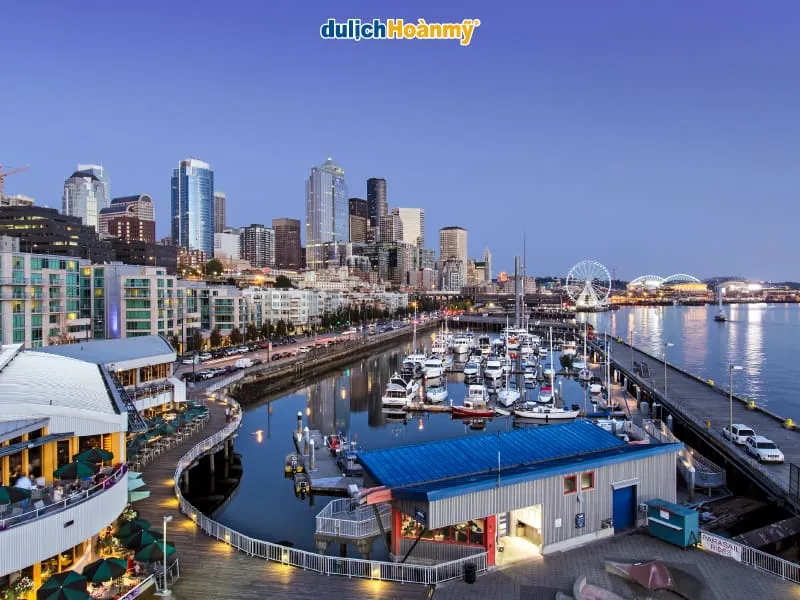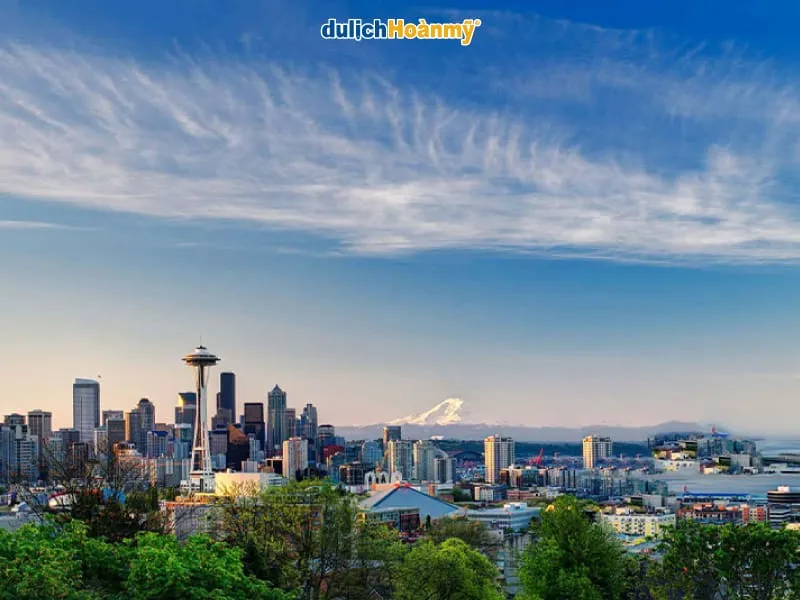Seattle, the largest city in the Pacific Northwest, is renowned for its stunning natural landscapes, dynamic economy, and diverse community. However, few are aware of the eventful and transformative history behind its modern and bustling facade. Let’s explore the journey of Seattle from a small fishing village to a leading global technology center.
Early Beginnings: From Native Village to White Settlement
Before the arrival of white settlers, the land that is now Seattle was home to indigenous tribes such as the Duwamish and Suquamish. They lived in harmony with nature, fishing and hunting in the area. The first white people to reach this area were an expedition led by George Vancouver in 1792. However, it wasn’t until 1851 that white settlers began to establish permanent settlements here.
In 1852, the settlement was named Seattle, in honor of Chief Seattle (Sealth) of the Duwamish and Suquamish tribes, a highly influential figure known for his ability to mediate between Native Americans and white settlers. This decision reflected the desire to build peaceful and cooperative relationships between the two communities.

Initial Development: The Lumber Industry and the Railroad
Seattle’s early years were closely tied to the lumber industry. Its favorable geographical location, with abundant timber resources, transformed Seattle into a significant center for logging and timber processing. Sawmills sprung up rapidly, attracting workers from far and wide.
A pivotal moment in Seattle’s history was the arrival of the Northern Pacific Railroad in 1883. This railway connected Seattle to other parts of the country, opening up unprecedented opportunities for trade and economic development. Seattle quickly became a major transportation hub, attracting investment and residents.
Overcoming Adversity: The Great Fire and the Klondike Gold Rush
In 1889, a devastating fire destroyed much of downtown Seattle. However, instead of succumbing to despair, the people of Seattle rallied, rebuilding the city on a larger and more modern scale. The city was reconstructed with robust infrastructure, including water and sewage systems.
The Klondike Gold Rush in the late 19th century brought a new wave of prosperity to Seattle. The city became the primary gateway for prospectors heading to Klondike, Alaska. Seattle provided logistical services, equipment, and manpower for the gold rush, contributing to the city’s wealth and prosperity.

20th Century: Aviation, Technology, and Cultural Diversity
Moving into the 20th century, Seattle continued to grow strongly across various sectors. The aerospace industry emerged and flourished, with the rise of Boeing, one of the world’s largest aircraft manufacturers. Boeing became an icon of Seattle, making significant contributions to the economy and creating thousands of jobs for local residents.
In recent years, Seattle has become a leading global technology hub, home to tech giants such as Microsoft and Amazon. The growth of the technology industry has attracted talent from around the world, transforming Seattle into a multicultural and dynamic city.
The mild climate and beautiful natural scenery have also contributed to Seattle becoming an attractive tourist destination.

Seattle Today: A Global City with Immense Potential
Today, Seattle is a global city, a major economic, cultural, and technological center of the United States and the world. The city is constantly innovating and developing, striving towards a sustainable and prosperous future.
With its unique history and remarkable achievements, Seattle rightfully deserves its place as one of the most livable cities in the world. From a small fishing village, Seattle has grown into a symbol of creativity, innovation, and resilience.
Conclusion
The history of Seattle’s formation is a captivating story of human perseverance, creativity, and adaptability. From a small settlement, Seattle has navigated numerous periods of growth and change, from the development of the lumber industry and the Klondike Gold Rush to the rise of the aerospace and information technology sectors. Today, Seattle is a global city, a major economic, cultural, and technological center of the United States and the world. Understanding Seattle’s history not only helps us appreciate its past but also allows us to value the contributions Seattle is making to the world.